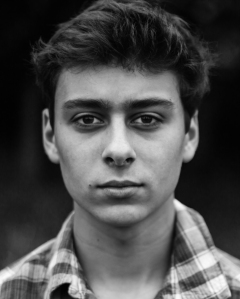*1 By: Andrey Starostin
No two photographers are the same; remember that-

-Remember that the next time you admire a cliché legend like Annie Leibovitz or Henri Cartier-Bresson. Both are immediately recognized and respected, but the latter could not be further different than the former.
(Speaking of clichés) The key is having fun. Let me make something clear– if you do not have fun the instant you are in the same room as a camera, you are not a photographer. A photographer is giddy with a camera in their hands. And fun is respectable. That photographer will get better with every frame their camera captures because they are not conceptualizing how their photos will look on their computer, they are thinking about how much fun they are having. If photography is fun to you, I can provide you with my blatantly biased and profoundly honest opinions.
Fundamentals are prerequisites to success. If you don’t know what varieties of light look like to your camera, you will never take the photo you wish you did. With that said, I introduce to you the two types of photography:
Candid
This is Henri Cartier-Bresson’s cup of tea. His subject is wild. Cartier-Bresson observed the world around him and was prepared to capture “the decisive moment” at any point throughout his day. His image is captured, not created.
Contrived
Meet Annie Leibovitz, she makes her way to the studio with an image in mind. The model has been booked and prepped, hair and make-up did, backdrop dropped, camera tethered, and magazine waiting for publishing. Her image is sculpted, not found.
Once you figure out what type of photography you crave, a bag of tools must be earned. You must commit a set of rules to memory both mental and muscle. You must be able to enter a space and have camera settings buzzing in your head to the extent where if you are handed a camera, your hands move faster than you can explain.
However, regardless of what tool you possess, the single most valuable skill in photography is the ability to see and differentiate light. There is natural light and there is artificial light. Natural light comes from one source – the sun. Artificial light is every other source, designed to most closely replicate the sun. Learning how to use the sun’s natural light to your advantage will allow you to replicate a scene artificially at any time. We will talk about types of light later.
There are three basic settings that every (useful) camera has control of. You’ve heard them before, but here they are:
ISO: This is your sensor’s/film’s sensitivity to light. For analog cameras, you adjust the iso (otherwise known as ASA) one time: when you choose your film. On digital cameras, the iso should only be adjusted when there is too little light hitting your subject. If you can, adjust everything else before you adjust the iso. The higher the iso, the more light you will pick up. However, the more light you are picking up, the more grainy your photo will appear.
Aperture: This is a set of blades in every lens. Adjusting the aperture sets the amount of light you let through your lens. Like the ISO creates a grainy photo when adjusted, the aperture controls the Depth of Field in your photo. The wider open your aperture, the thinner the depth of field, making whatever you are not focussed on have the Bokeh effect popularized by DigitalRevTV on YouTube. As you close your aperture, the depth of field widens, allowing for more things in your frame to be in focus.
Shutter Speed: This is the thing immediately in front of your sensor/film. It is the satisfying fluttering click that fires when you press the big button. It controls the amount of time light can enter your camera. The longer the amount of time, the blurrier the photo will get if you can not keep your camera still (use a tripod). The shorter the amount of time, the more crisp a subject that is moving will be.
That is all I want to say about the droll fundamentals that is The Exposure Triangle. Look it up somewhere else for more detail. Then come back to learn about how to turn that into art.
If you would like to leave a comment, please do so below.
Along with following this blog, you can:
Observe my stream of consciousness style life on Instagram.
Regard my humble love for portrait photography in My Portfolio.
Send me an email Have a conversation with a real human being at Andrey@Starostinphoto.com
**** Thank you so much for reading my blog. ****